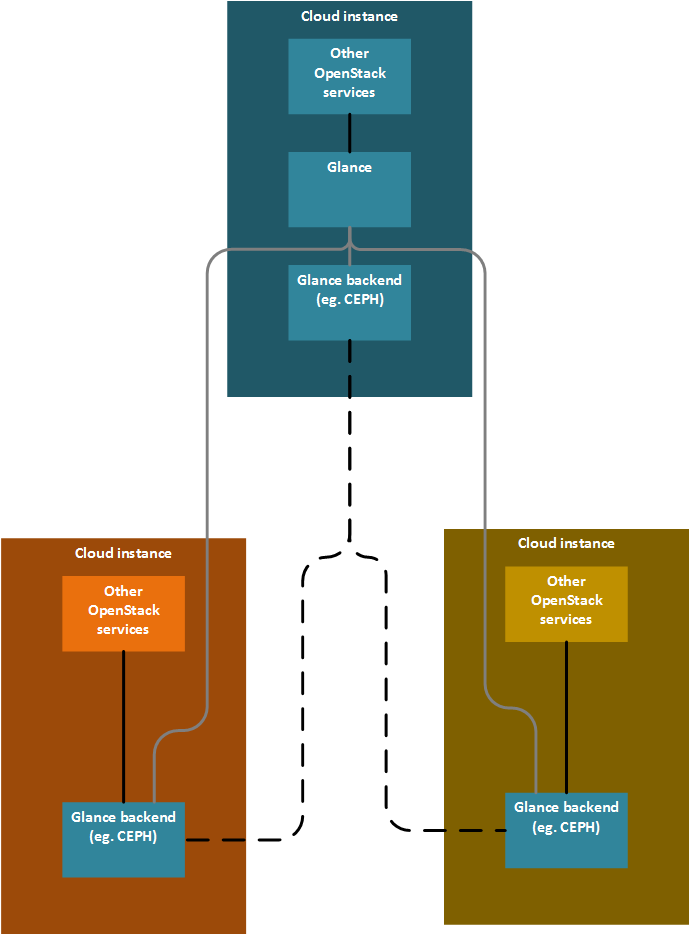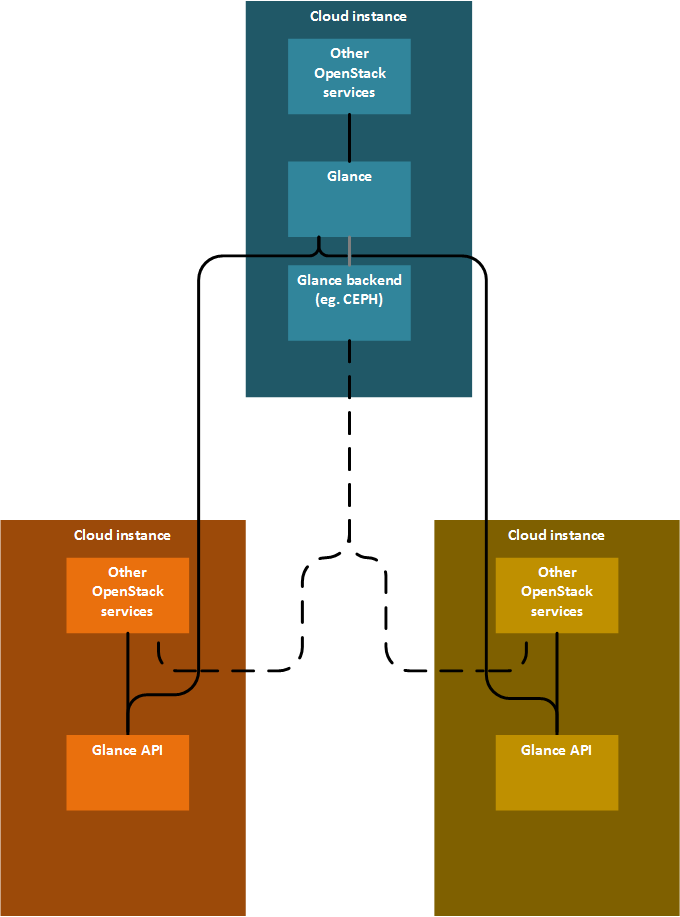Difference between revisions of "Image handling in edge environment"
| Line 25: | Line 25: | ||
[[File:Glance-edge-architecture-synch-service.PNG]]<br/> | [[File:Glance-edge-architecture-synch-service.PNG]]<br/> | ||
Cascading is visible for the syncronisation service only, not for Glance. | Cascading is visible for the syncronisation service only, not for Glance. | ||
| − | |||
== One Glance and multiple Glance API servers == | == One Glance and multiple Glance API servers == | ||
Revision as of 07:20, 8 June 2018
This page contains a summary of the Vancouver Forum discussions about the topic. Full notes of the discussion are in here. The features and requirements for edge cloud infrastructure are described in OpenStack_Edge_Discussions_Dublin_PTG.
Source of the figures is here.
Contents
Synchronisation strategies
- Copy every image to every edge cloud instance: the simplest and less optimal solution
- Copy images only to those edge cloud instances where they are needed
- Provide a syncronisation policy together with the image
- Rely on the pulling of the images
Architecture options for Glance
Legend for the figures:
- Solid lines are REST API
- dashed lines are where the actual image data are transferred
One Glance with multiple backends
There is one central Glance what is capable to handle multiple backends. Every edge cloud instance is represented by a backend. The syncronisation of the image data is the responsibility of the backend (eg.: CEPH). OpenStack services in the edge cloud instances are using the images in the Glance backend with a direct url.

Work for multiple backends has been already started with an etherpad and a spec.
Cascading (one edge cloud instance is the receiver and the source of the images at the same time) is possible if the central galnce is able to orchestrate the syncronisation of images.
- Concerns
- Network partitioning tolerance?
- Is it safe to store database credentials in the far edge?
Several Glances with an independent syncronisation service
Every edge cloud instance have its Glance instance. There is a synchronisation service what is able to instruct the Glances to do the synchronisation. The synchronisation of the image data is the responsibility of the backend (eg.: CEPH).
Cascading is visible for the syncronisation service only, not for Glance.
One Glance and multiple Glance API servers
There is one central Glance and every edge cloud instance runs a separate Glance API server. These Glance API servers are communicating with the central Glance. Backend is acessed centrally, there is only chaching in the edge cloud instances.

Cascading is not possible as only pulling strategy works in this case.

